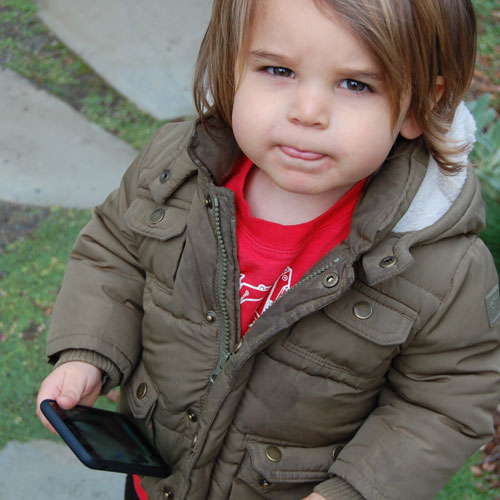Use a camera phone and a magnifying lens to compare and document observations of the natural world and notice how technology can change perception. Children will practice communicating ideas and will build motivation to learn more about something of their choosing.
Materials Required
- Phone that can take pictures
- Magnifying lens (or smart phone camera microscope lens)
- Paper and pencil
Instructions
- Ask a child to find something outside that they wish they could see more closely (e.g. a flower, a leaf, tree bark).
- Take a picture of it with your phone as closely as you can without it being blurry. Together with your child, notice shapes or colors of both the picture and the real object.
- Zoom in on an area of the picture that is interesting. Let your child zoom in and out with their fingers, talking about what happens to the image as they manipulate it. Ask: What happens to the picture when we zoom in? Can you see more detail with your eye or in the zoomed-in picture? Notice differences in size: How large can you make a small detail of the object? Can you reverse the magnification using your phone to make the large object become smaller? At what point can you no longer identify the object?
- Introduce the magnifying lens and let your child explore it. Encourage them to use it to look at the object you took a picture of. Ask: What do you notice when you look through this? Is there anything you hadn’t noticed before? Can you use the magnifying lens combined with the photo to get the same image as a zoomed-in photo? What happens when you combine photos using more than one phone?
- Finally, draw pictures of the object. Draw one picture from far away to capture all the things that surround it and then draw a picture up close to get all the details noticed when using the phone and the magnifier.
Additional Tips
Try these add-on activities:
- The wordless picture book, Zoom, by Istvan Banyai is a great accompaniment to this activity. Read it with your child, and talk about differences that you notice as the perspective shifts. With a large group, try photocopying each page, shuffling them and handing out one page to each participant. Can they put the pages in order without talking and without looking at the book?
- Introduce other tools for magnification like a microscope, loupe, projector, smartphone camera microscope lens, or headband magnifier.
- Pick five images that are zoomed-in significantly. Challenge children to match each image with the real-life object.
- Visit an art museum or use examples of artwork to talk about scale and perspective.


